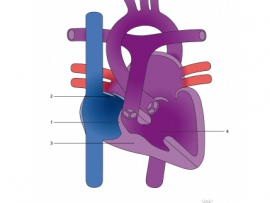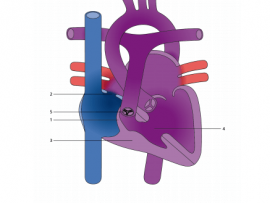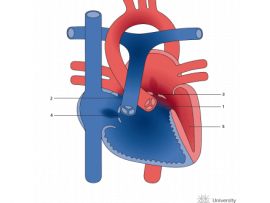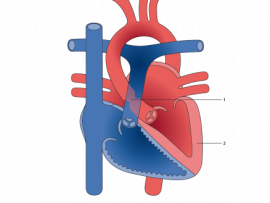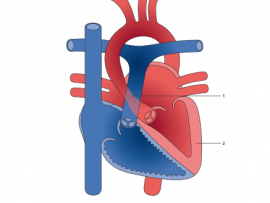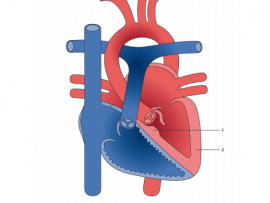Discover our section specialized in congenital heart disease pathologies, where you can find more than 200 pathologies.
Collaboration with Prof. Daniel Tobler and University of Basel
Tricuspid atresia is a birth defect of the tricuspid valve, which is the valve that controls blood flow from the right atrium (upper right chamber of the heart) to the right ventricle (lower right chamber of the heart). Tricuspid atresia occurs when this valve doesn’t form at all, and no..
Read MoreThe normal pumping chambers of the heart (the ventricles) must have an inflow valve to let blood in, a good-sized pumping chamber and an outflow to allow blood to exit the chamber during contraction. In tricuspid atresia, the tricuspid valve, which lies between the heart’s upper right chamber (the right atrium) and lower right..
Read MoreTricuspid atresia is a birth defect of the tricuspid valve, which is the valve that controls blood flow from the right atrium (upper right chamber of the heart) to the right ventricle (lower right chamber of the heart). Tricuspid atresia occurs when this valve doesn’t form at all, and no..
Read MoreTricuspid atresia is a birth defect of the tricuspid valve, which is the valve that controls blood flow from the right atrium (upper right chamber of the heart) to the right ventricle (lower right chamber of the heart). Tricuspid atresia occurs when this valve doesn’t form at all, and no..
Read MoreTricuspid atresia is a birth defect of the tricuspid valve, which is the valve that controls blood flow from the right atrium (upper right chamber of the heart) to the right ventricle (lower right chamber of the heart). Tricuspid atresia occurs when this valve doesn’t form at all, and no..
Read MoreThe term “unbalance” has been used for decades in atrioventricular septal defect (AVSD) to describe a lack of symmetry between left and right sides of the heart. Even though we all think to understand its meaning, the concept it alludes to is quite vague. What does then “unbalance” truly mean?..
Read MoreSupravalvular aortic stenosis(SVAS) is a congenital heart defect. As the name suggests, SVAS means the section of the aorta located just above the aortic valve is narrowed. SVAS accounts for 8% to 14% of all congenital aortic stenosis. Three different types of SVAS are recognized: hourglass, membranous, and hypoplasia of..
Read MoreSupravalvular aortic stenosis(SVAS) is a congenital heart defect. As the name suggests, SVAS means the section of the aorta located just above the aortic valve is narrowed. SVAS accounts for 8% to 14% of all congenital aortic stenosis. Three different types of SVAS are recognized: hourglass, membranous, and hypoplasia of..
Read MoreSubvalvular aortic stenosis (SAS) is the second most common type of aortic stenosis, accounting for 14% of left ventricular outflow tract (LVOT) obstruction, with valvular aortic stenosis being the most common cause (70%). The prevalence of SAS is 6.5% of all the adult congenital heart diseases. It predominantly involves males, with a..
Read MoreSubvalvular aortic stenosis (SAS) is the second most common type of aortic stenosis, accounting for 14% of left ventricular outflow tract (LVOT) obstruction, with valvular aortic stenosis being the most common cause (70%). The prevalence of SAS is 6.5% of all the adult congenital heart diseases. It predominantly involves males, with a..
Read More

